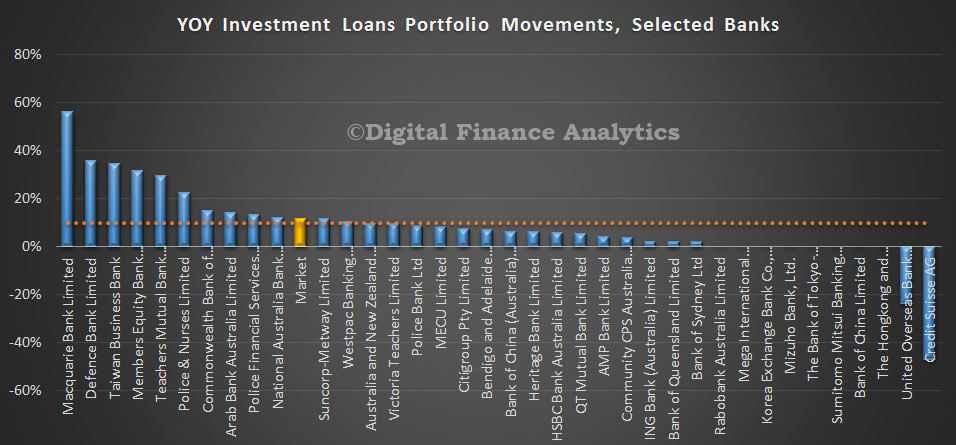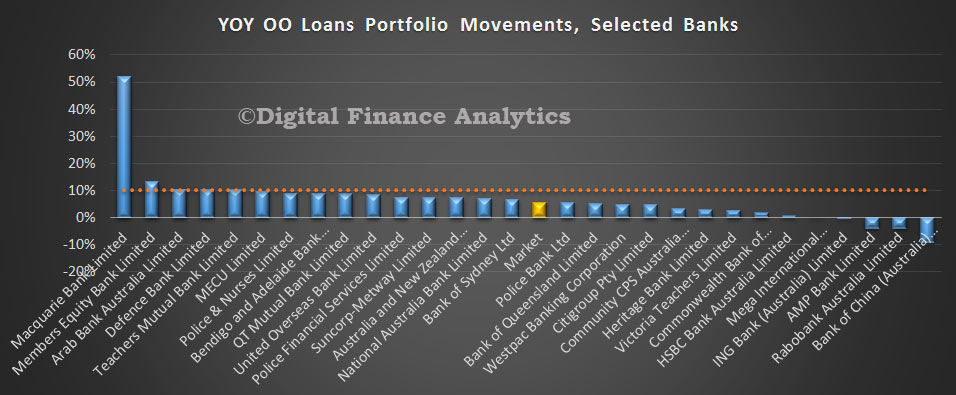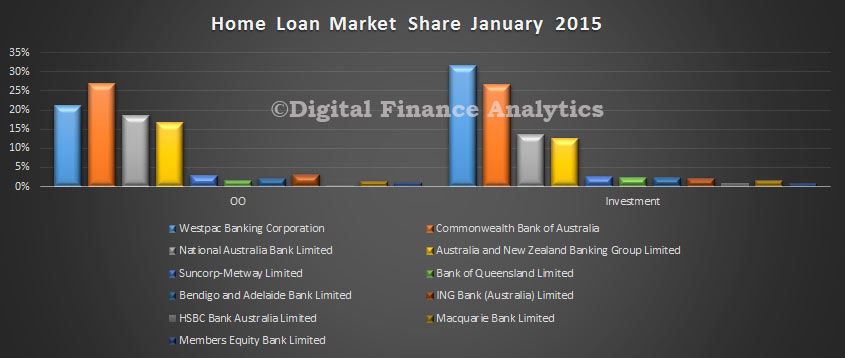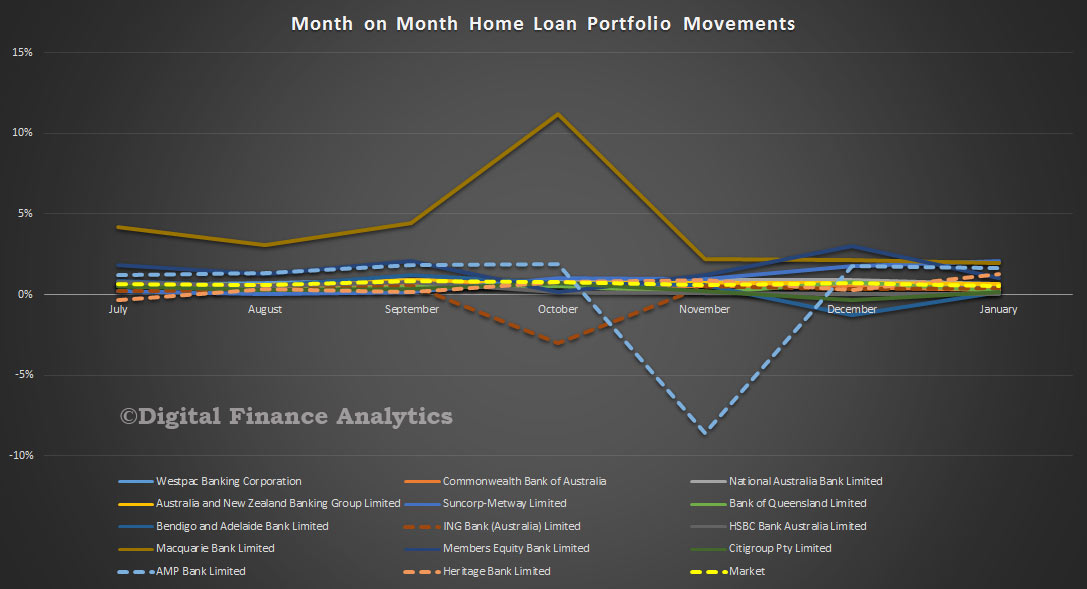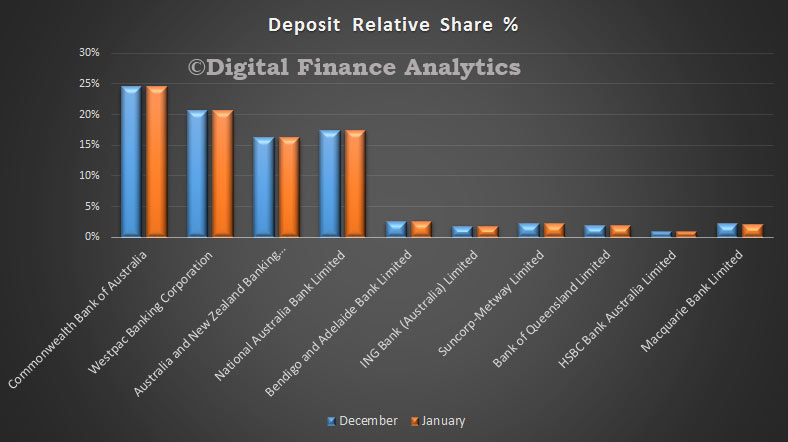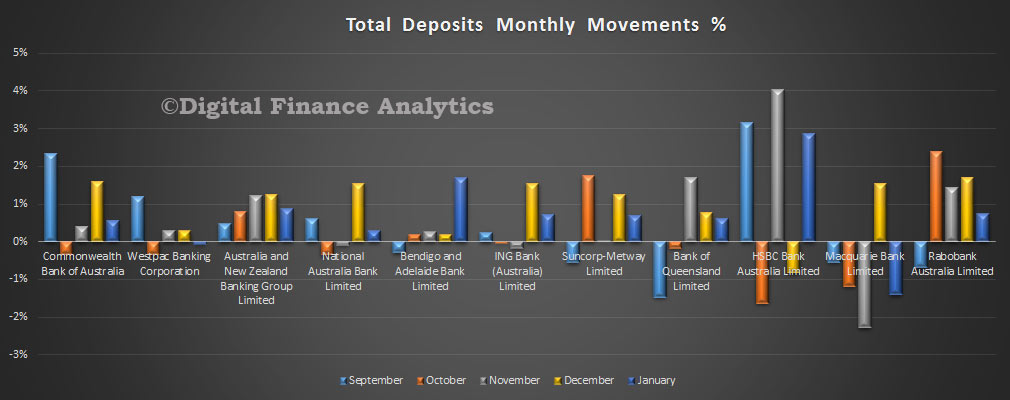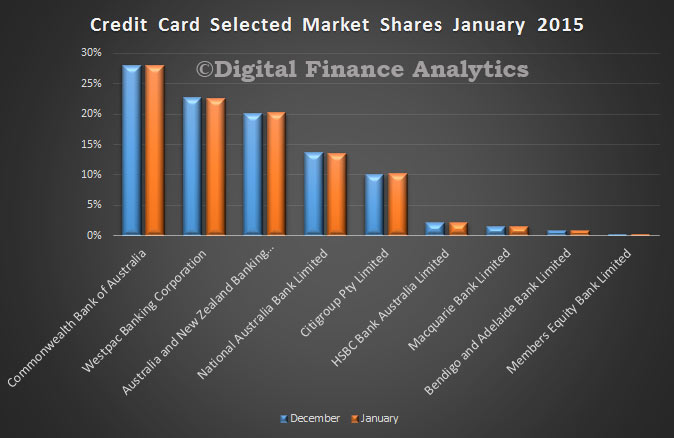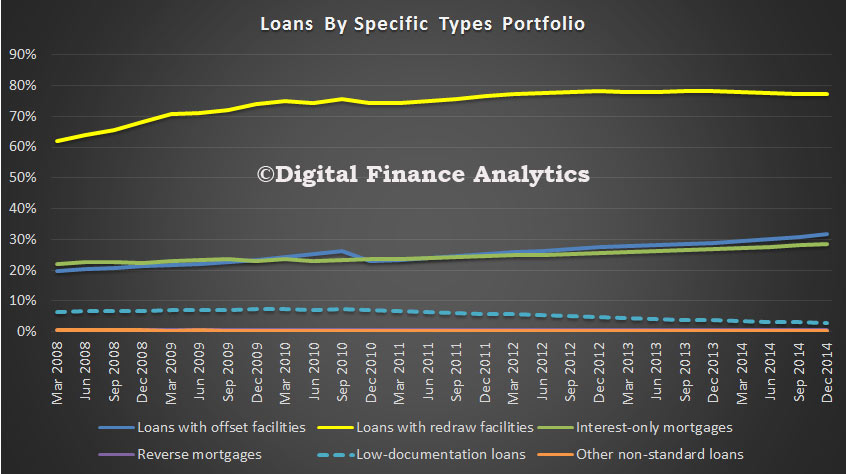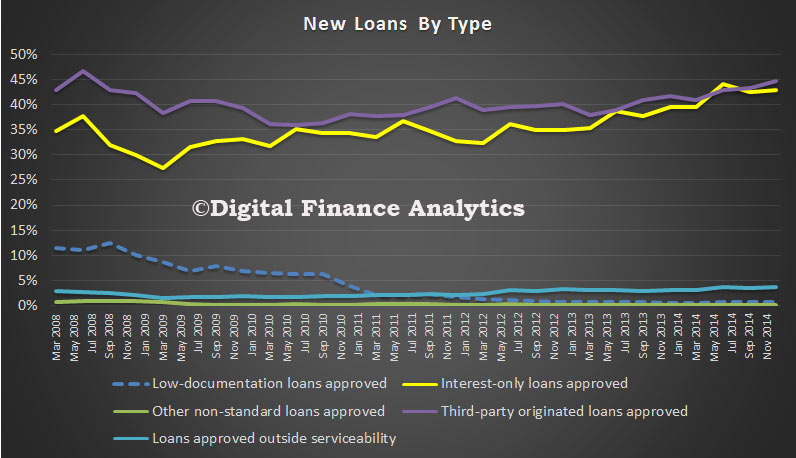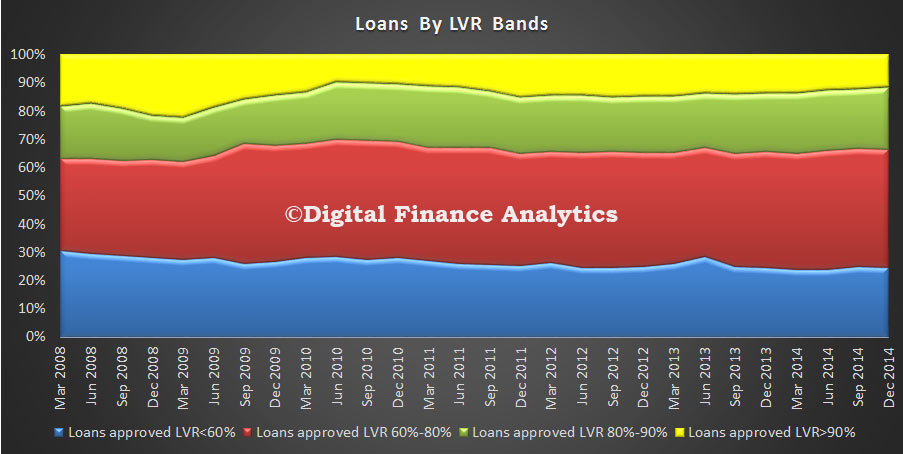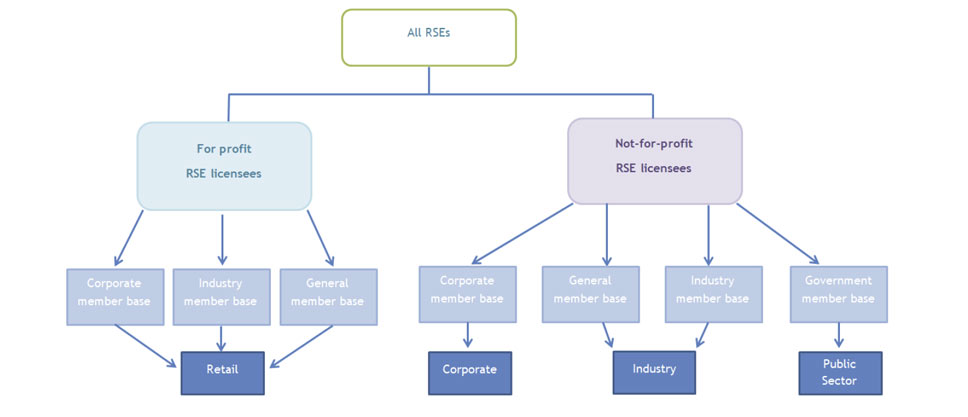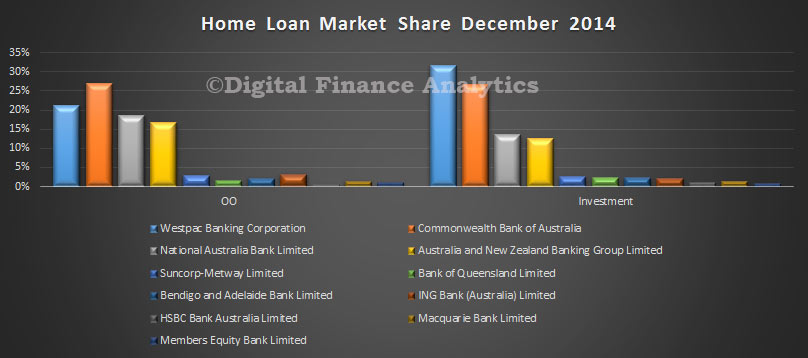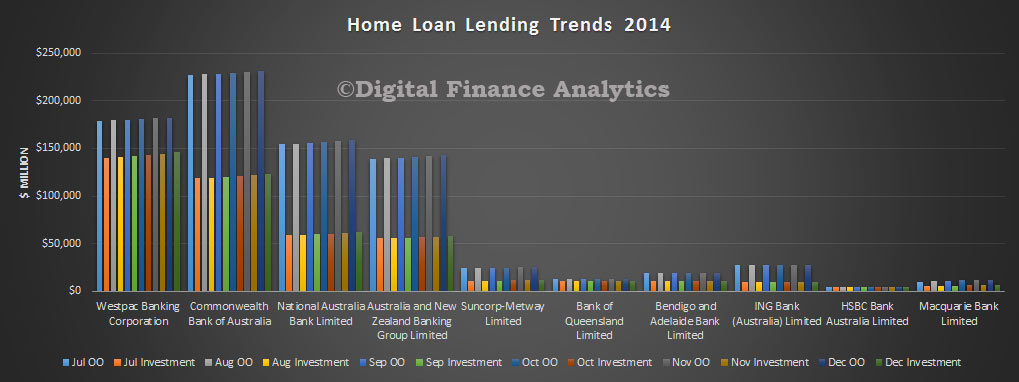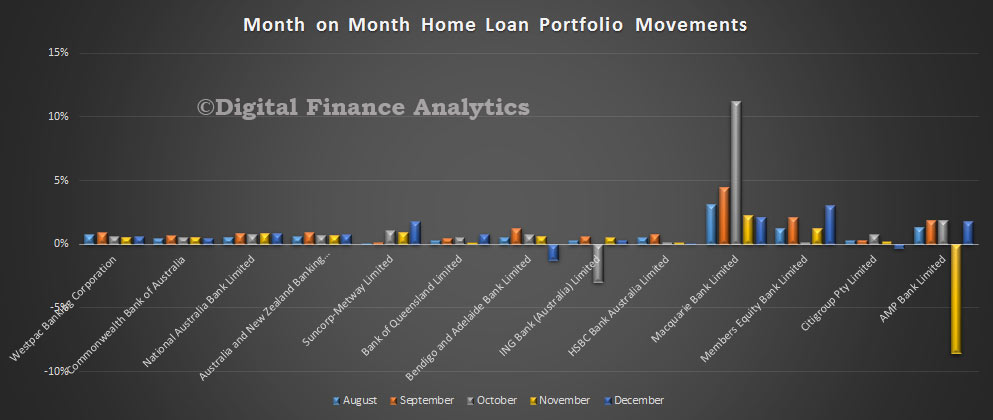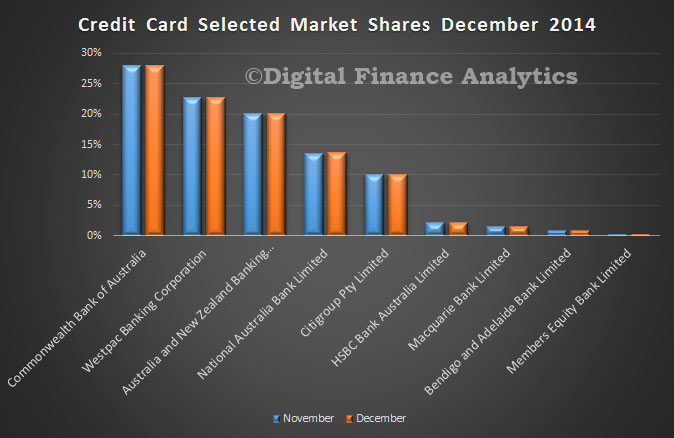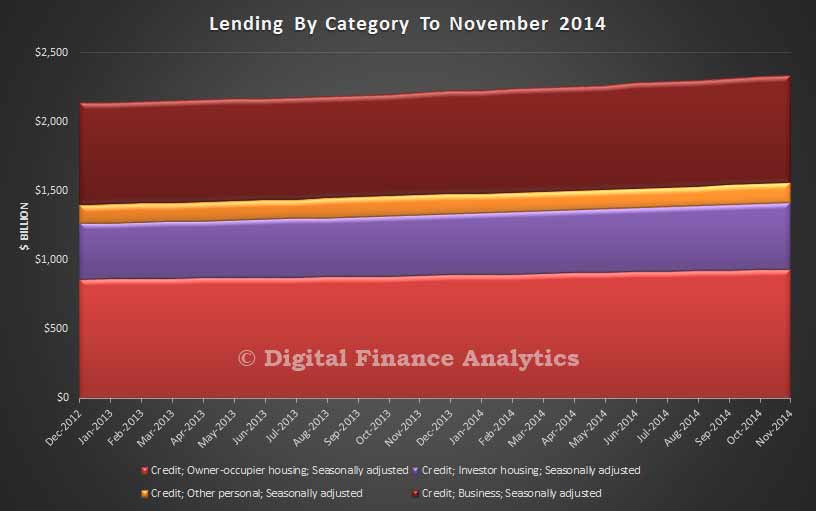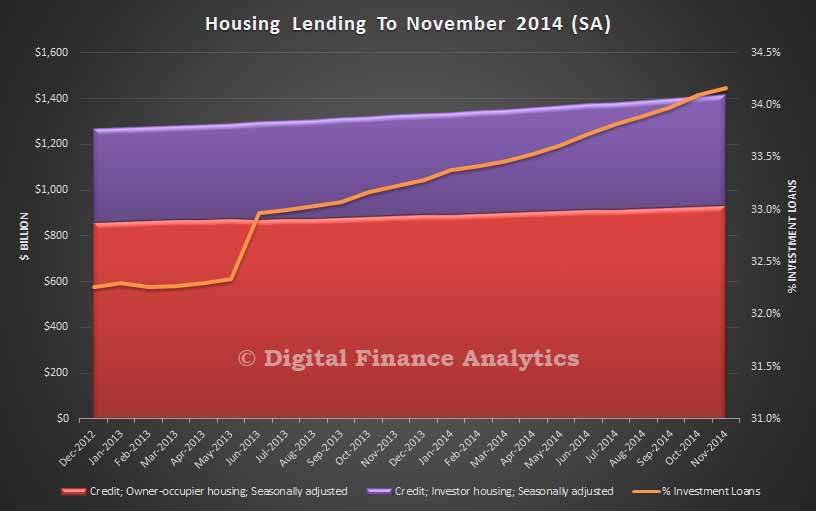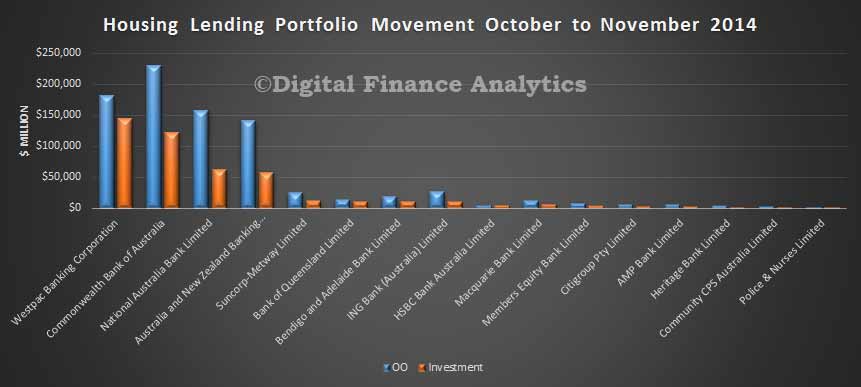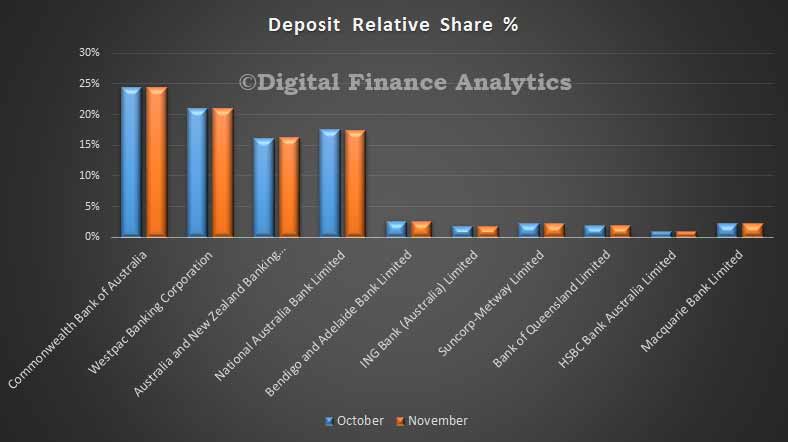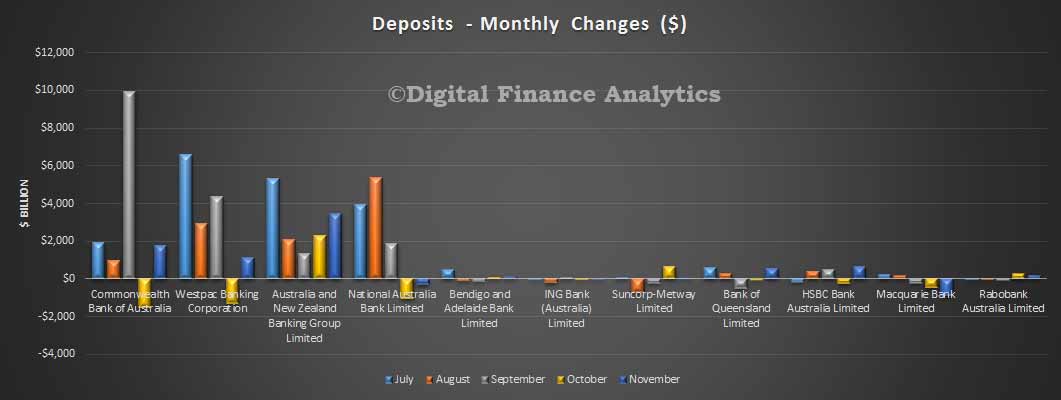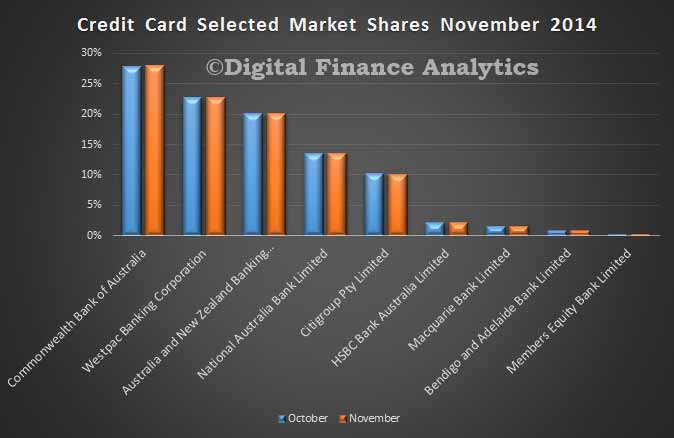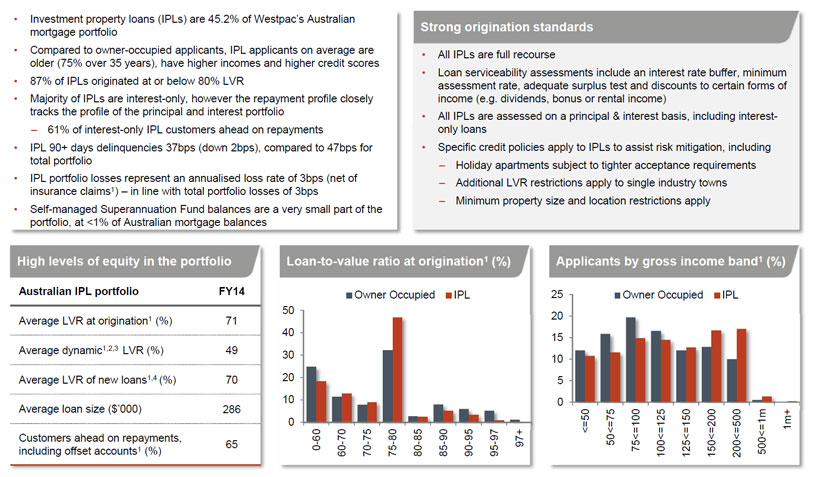In Wayne Byres speech today to the House of Representatives Standing Committee on Economics, there was a clear indication that they would wait for the results of the international work of changes to capital rules before doing much locally. Meantime they will continue to talk to the local banks about sound lending practice. Too little, to late in my view. We need to move beyond a fixation on financial stability.
Sound Lending Practices for Housing
When we made our last appearance, we were still contemplating potential actions with respect to emerging risks in the housing market. We have since written to all authorised deposit-taking institutions (or ADIs) encouraging them to maintain sound lending standards, and identified some benchmarks that APRA supervisors will be using in deciding whether additional supervisory action – such as higher capital requirements – might be warranted.
I would like to emphasise that, in alerting ADIs to our concerns in this area, we are seeking to ensure emerging risks and imbalances do not get out of hand. We are not targeting house price levels – as I have said elsewhere, that is beyond our mandate – and we are not at this point asking banks to materially reduce their lending. We have identified some areas where we have set benchmarks that we think will be useful indicators of where risk could be building, and in doing so, will help reinforce sound lending practices amongst all ADIs. We are currently assessing the plans and practices of individual ADIs and, over the next month or so, will be considering whether any supervisory action is needed. So far, our discussions with the major lenders have suggested they recognise it is in everyone’s interests for sound lending standards to be maintained. But we shall see – we are ready to take further action if needed.
Financial System Inquiry
Beyond this immediate issue, we are also giving thought to the more fundamental issues in relation to ADI capital contained in the recommendations of the Financial System Inquiry. There are two key influences on how we will proceed on these issues: first, the submissions made through the Government’s consultation process, and second, the work still underway on a number of related issues in the international standard-setting bodies, particularly the Basel Committee on Banking Supervision.
Helpfully, the FSI and the international work are pointing us in the same direction. There are, however, complexities in the detail that we need to work through carefully. In terms of timing, we do not need to wait for every i to be dotted and t to be crossed in the international work before we turn our minds to an appropriate response to the FSI’s recommendations. But it will be in everyone’s interests if, over the next few months, we are able to glean a better sense of some of the likely outcomes of the international work before we make too many decisions on proposed changes to the Australian capital adequacy framework.
Conflicts Management in Superannuation
When we last appeared before this Committee, we spent some of our time discussing the management of conflicts of interest in the superannuation industry. Since the introduction of prudential standards for superannuation in 2013, APRA has been assessing how well trustees have adjusted to the heightened expectations placed upon them, with a particular focus on conflicts management. The main message from our recent review in this area is that, while there have been improvements across the industry and some trustees have established quite good practices, others still have more work to do to meet the objectives of the prudential standard. Unfortunately, we still see instances where actual and potential conflicts are viewed very narrowly: a minimalist, compliance-based approach is taken to the design of conflicts management frameworks, rather than an approach that seeks to meet the spirit and intent of the requirements. Some trustees also take a reactive approach to dealing with conflicts, rather than ensuring regular and appropriate prior consideration of conflicts and a proactive approach to their effective management.
APRA’s supervisors are engaging with the entities that were covered by the review to ensure that appropriate and timely action is taken on any specific issues that were identified. We are also issuing a general letter to the industry, providing the key findings from the review and identifying a range of specific questions for trustees to consider in reviewing and enhancing their conflicts management frameworks. APRA will continue to focus on conflicts management as part of its future supervision activities, and will continue to push the industry to meet the enhanced governance and risk management expectations set out in our standards.
Private Health Insurance
Finally, let me make a quick comment on private health insurance. As you would be aware, APRA is not currently the prudential regulator of private health insurance – the Private Health Insurance Administration Council (PHIAC) performs that function – but we are preparing to take on that task from 1 July 2015, assuming the passage of the relevant legislation. For our part, we are working closely with PHIAC and other stakeholders, and will be ready to take on these new responsibilities. We are proposing only the minimum change necessary to the prudential standards and rules to align them with the proposed new legislation – in practice, health insurers should notice very little difference in their prudential arrangements from 1 July. But, even though the impact of the change may not be particularly noticeable, we would stress that a lot of work has gone into the preparations and it is in everyone’s interest that the momentum is not lost. APRA, PHIAC staff and industry will all benefit from the certainty provided by that.

